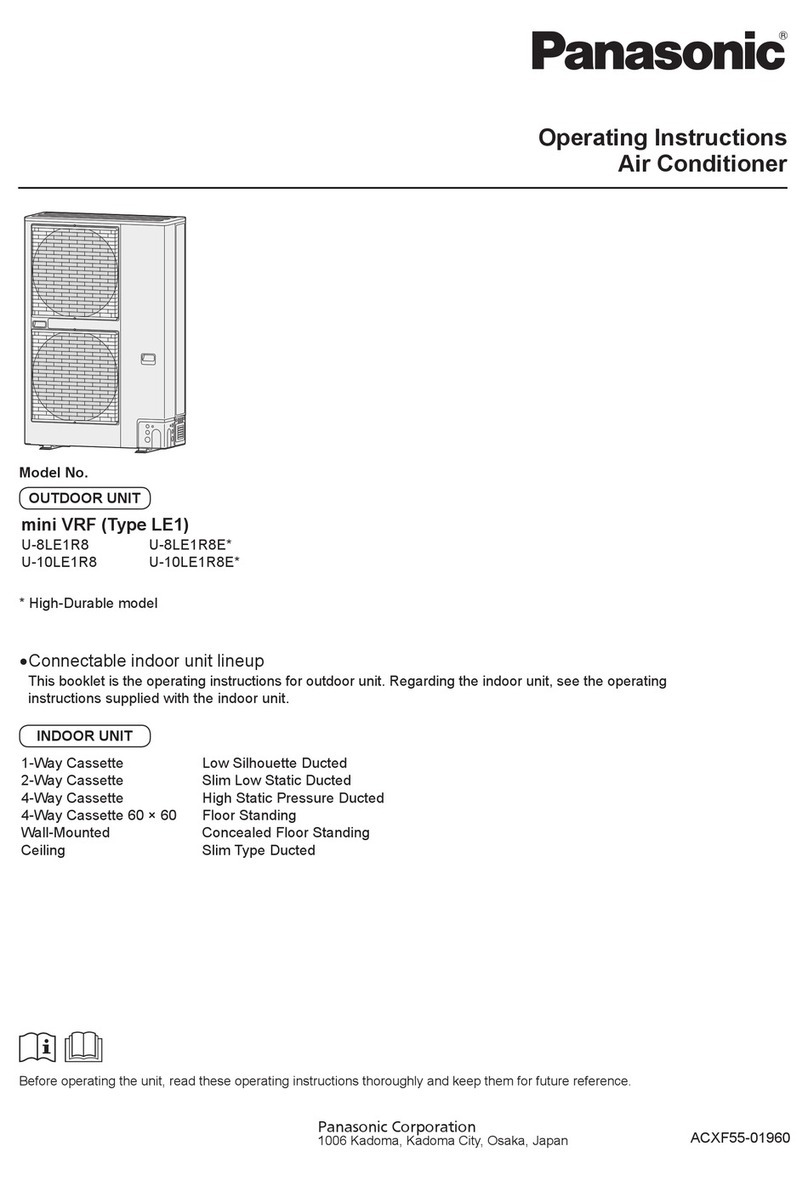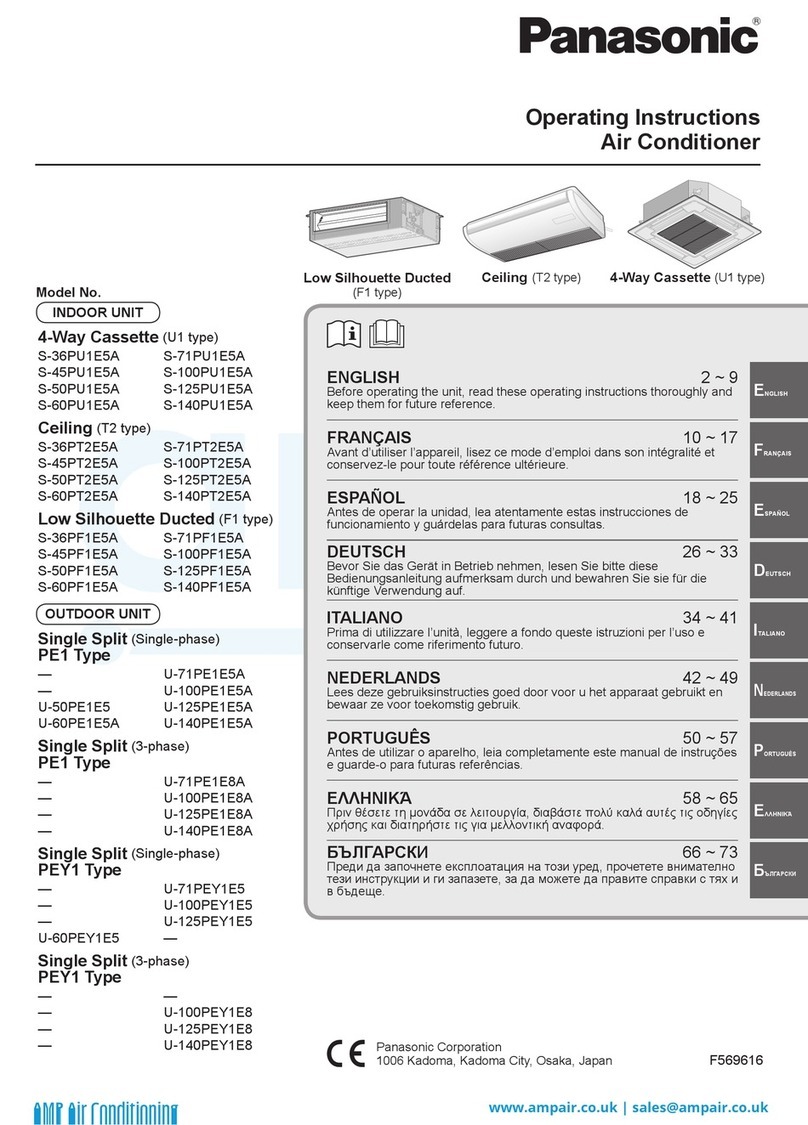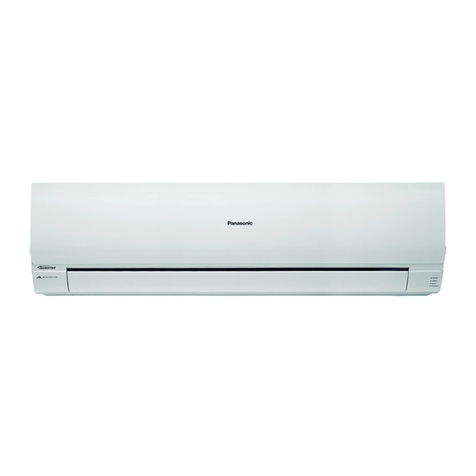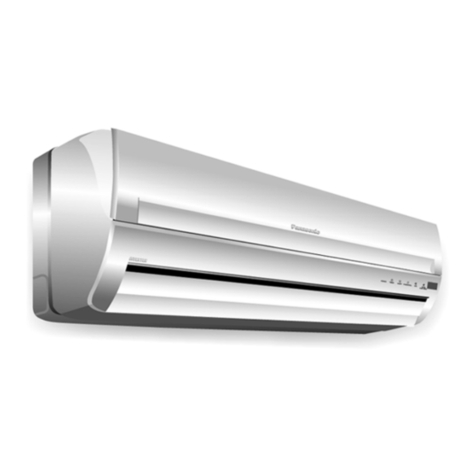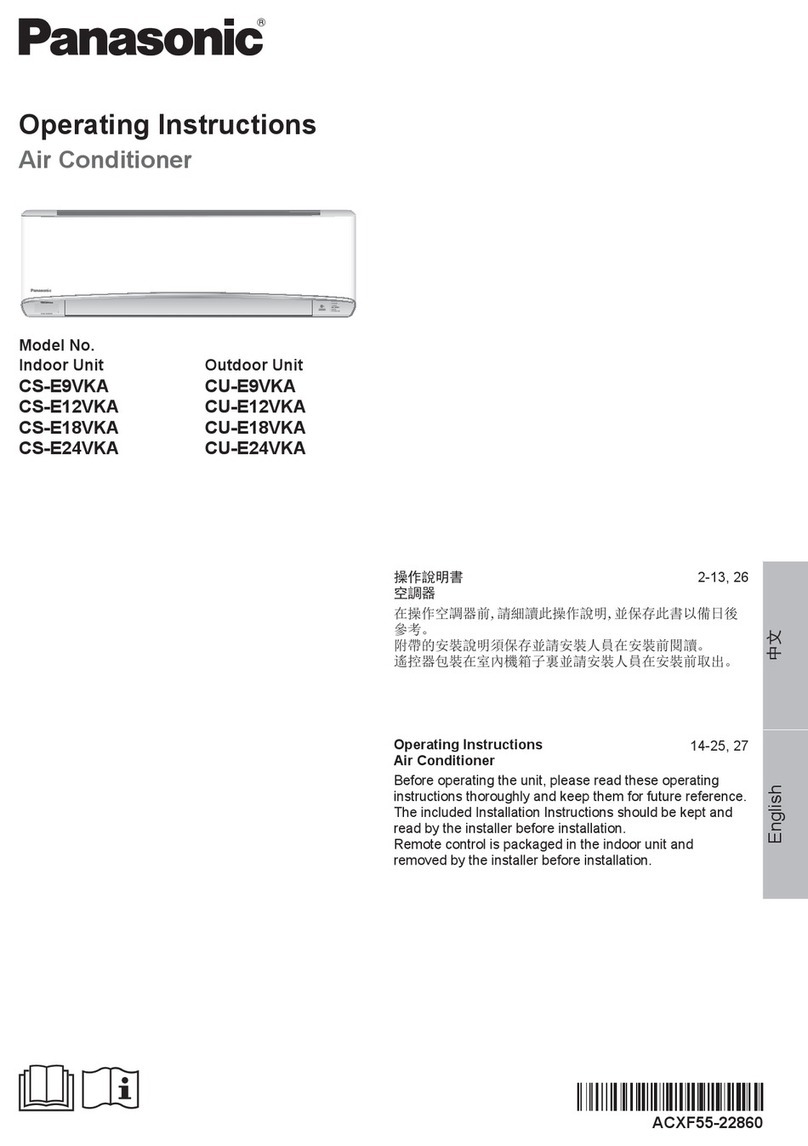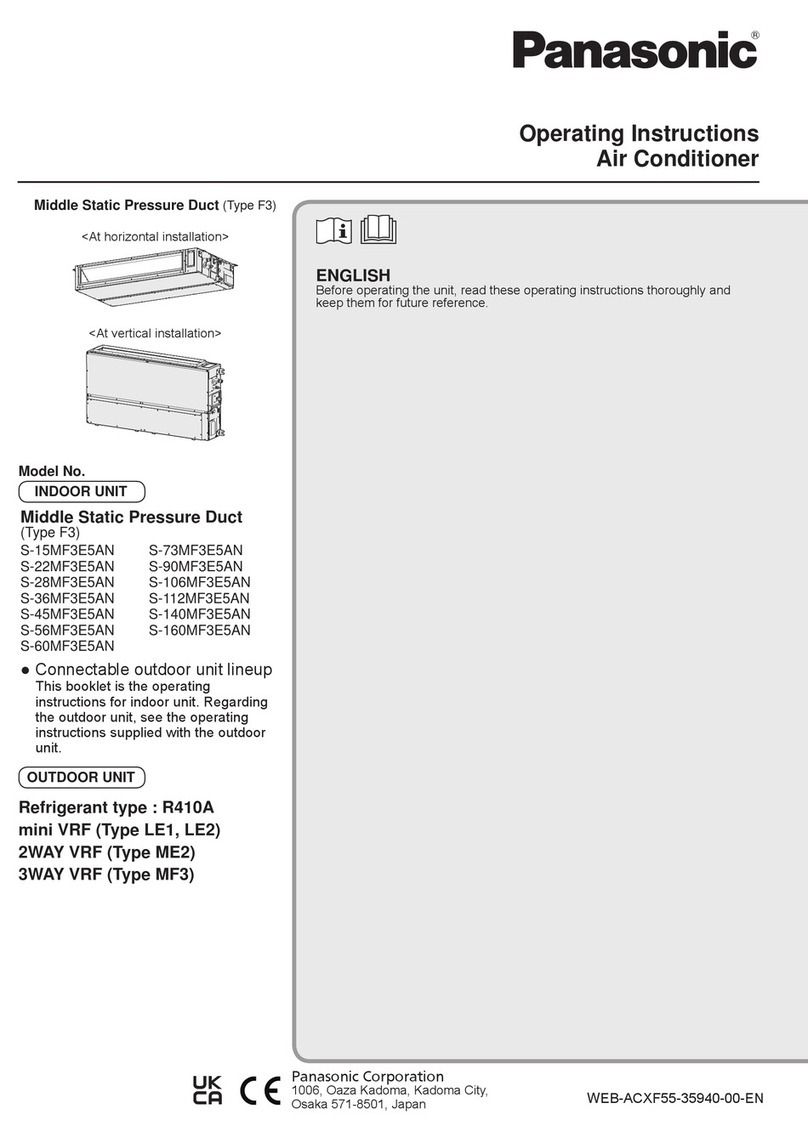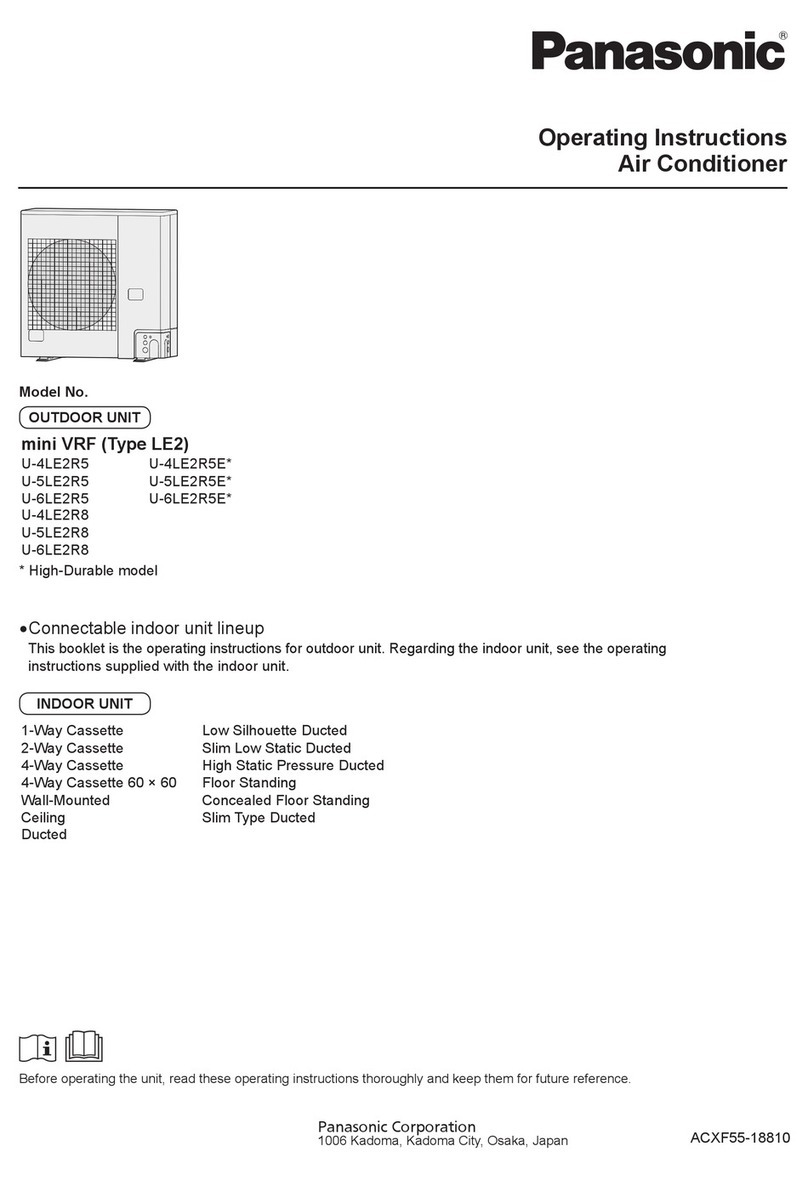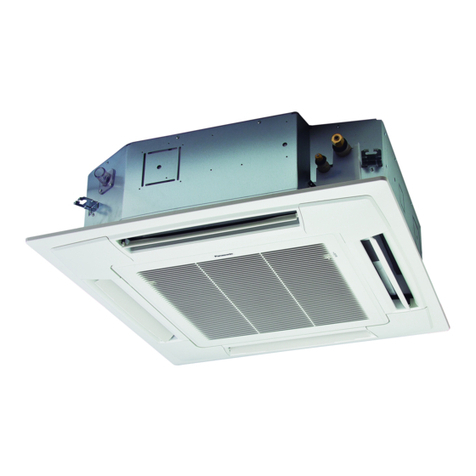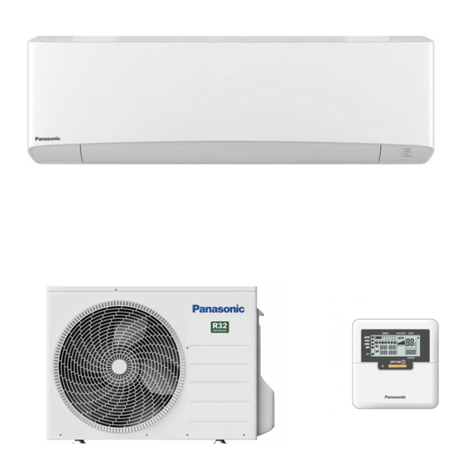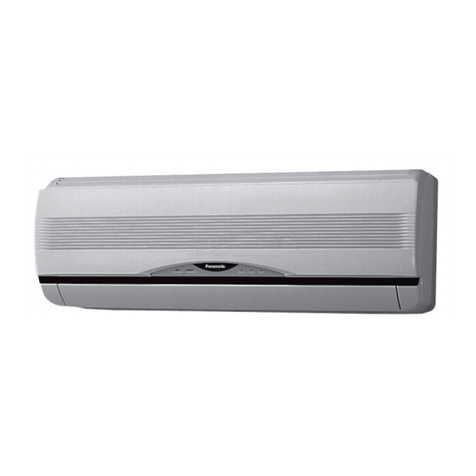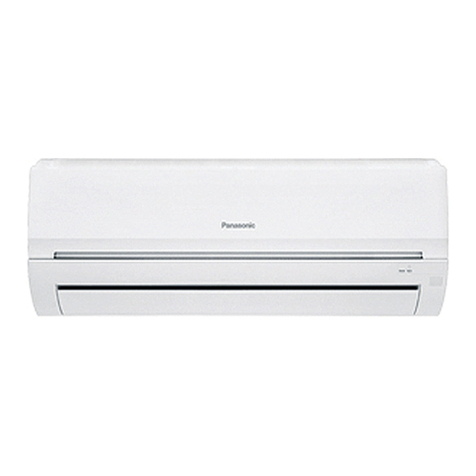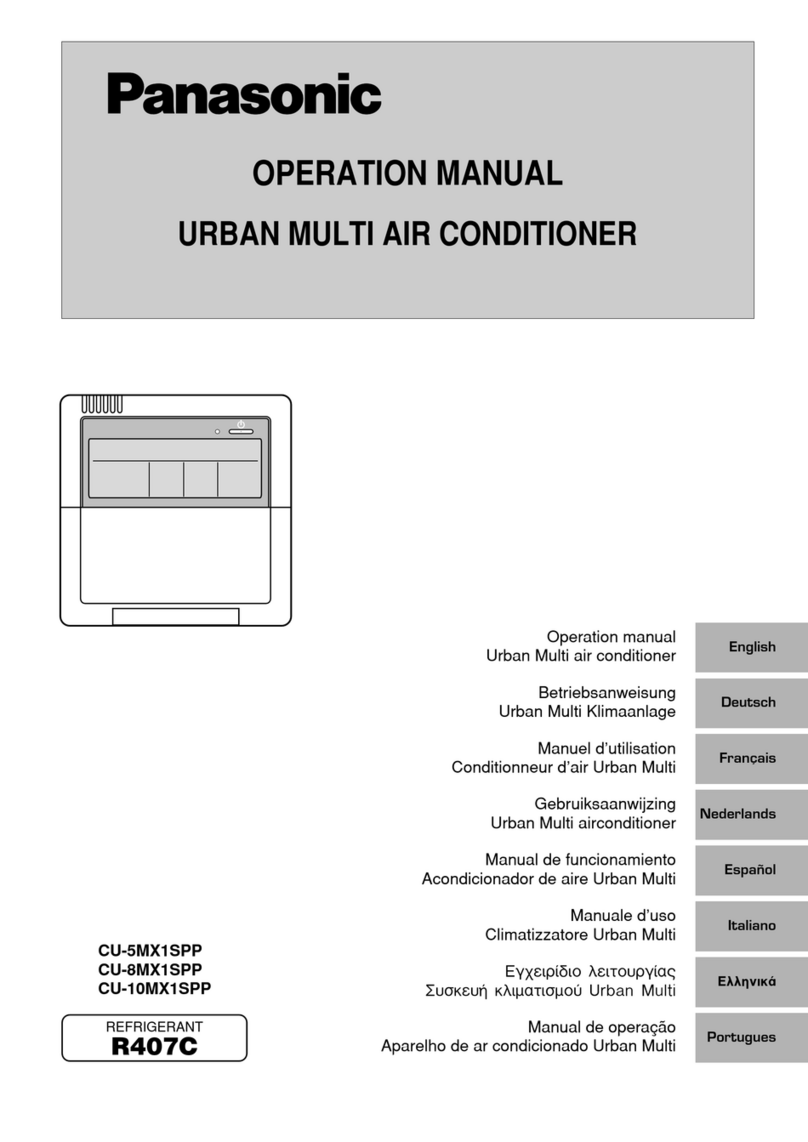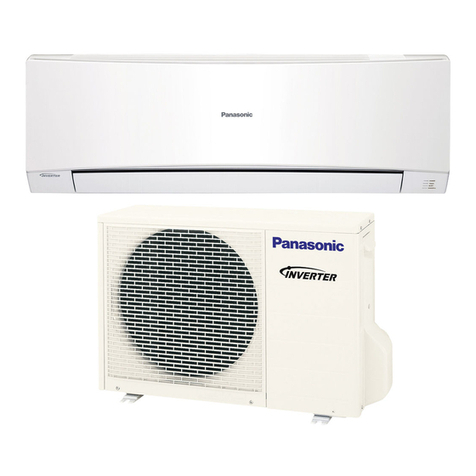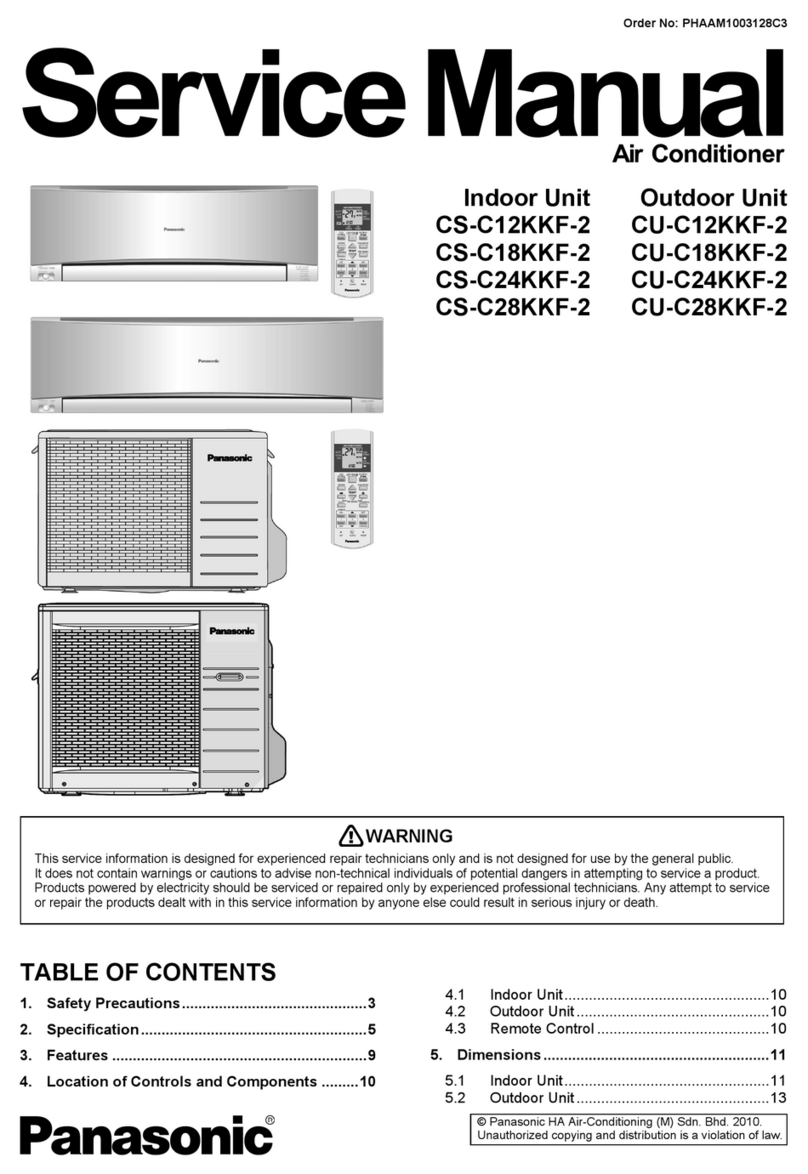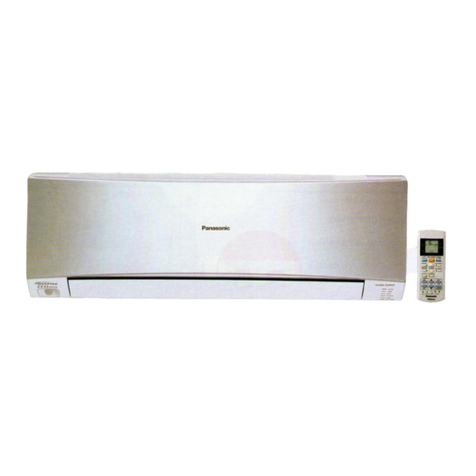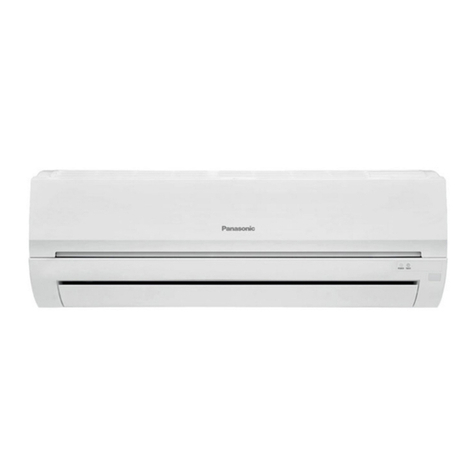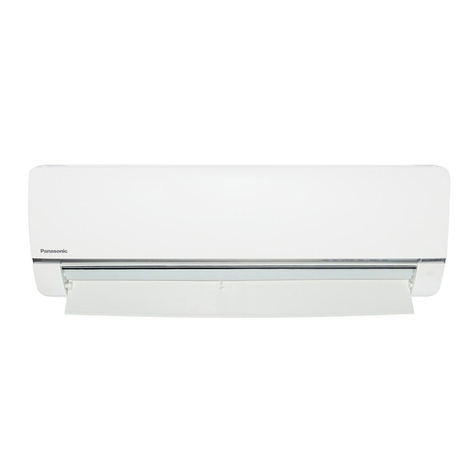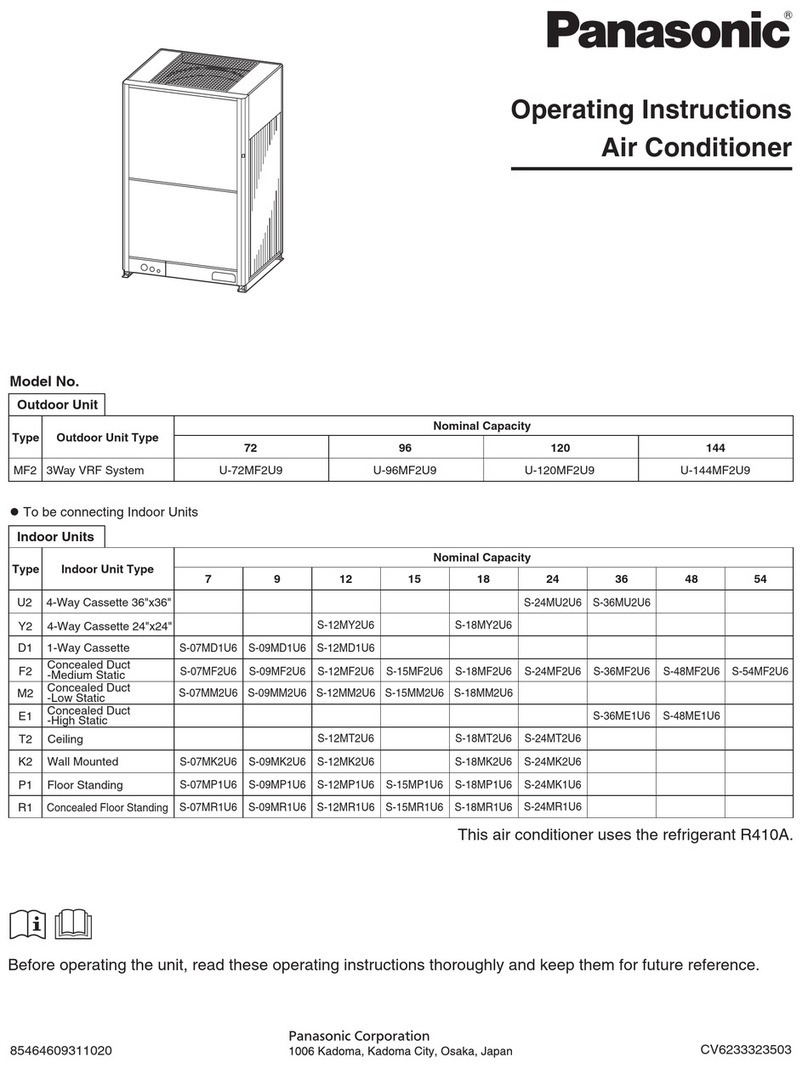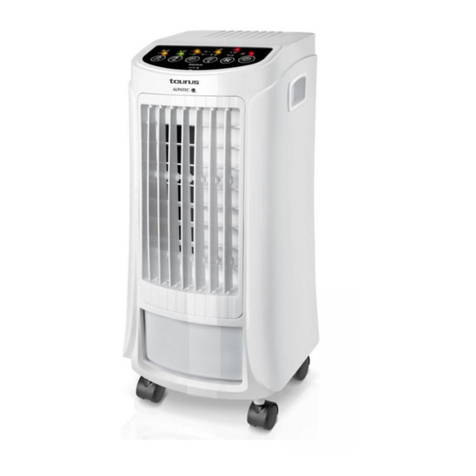
4
WARNING
•
When performing piping work, do
not mix air except for specified
refrigerant in refrigeration cycle. It
causes capacity down, and risk of
explosion and injury due to high
tension inside the refrigerant cycle.
•Iftherefrigerantcomesincontact
with a flame, it produces a toxic
gas.
•Donotaddorreplacerefrigerant
other than specified type. It may
cause product damage, burst and
injury, etc.
•Ventilatetheroomimmediately,inthe
event that is refrigerant gas leaks during
the installation. Be careful not to allow
contact of the refrigerant gas with a
flame as this will cause the generation
of toxic gas.
•Keepalltubingrunsasshortas
possible.
•Usetheflaremethodforconnecting
tubing.
•Applyrefrigerantlubricanttothe
matching surfaces of the flare and union
tubes before connecting them, then
tighten the nut with a torque wrench for
a leak-free connection.
•Checkcarefullyforleaksbeforestarting
the test run.
•Donotleakrefrigerantwhilepipingwork
for an installation or re-installation, and
while repairing refrigeration parts.
Handle liquid refrigerant carefully as it
may cause frostbite.
•Undernocircumstancesshallpotential
sources of ignition be used in the
searching or detection of refrigerant
leaks.
•Ahalidetorch(oranyotherdetector
using a naked flame) shall not be used.
•Electronicleakdetectorsmaybeused
to detect refrigerant leaks but, the
sensitivity may not be adequate, or
may need re-calibration. (Detection
equipment shall be calibrated in a
refrigerant-free area.)
•Ensurethatthedetectorisnota
potential source of ignition and is
suitable for the refrigerant used.
•Leakdetectionequipmentshallbeset
at a percentage of the lower flammable
limit (LFL) of the refrigerant and shall be
calibrated to the refrigerant employed
and the appropriate percentage of gas
(25 % maximum) is confirmed.
•Leakdetectionfluidsaresuitablefor
use with most refrigerants but the use of
detergents containing chlorine shall be
avoided as the chlorine may react with
the refrigerant and corrode the copper
pipe-work.
•Ifaleakissuspected,allnakedflames
shall be removed/extinguished.
•Ifaleakageofrefrigerantisfoundwhich
requires brazing, all of the refrigerant
shall be recovered from the system, or
isolated (by means of shut off valves)
in a part of the system remote from the
leak. Oxygen free nitrogen (OFN) shall
then be purged through the system both
before and during the brazing process.
When Servicing
•Contacttothesalesdealerorservice
dealer for a repair.
•Besuretoturnoffthepowerbefore
servicing.
•TurnthepowerOFFatthemain
power box (mains), wait at least 10
minutes until it is discharged, then
open the unit to check or repair
electrical parts and wiring.
•Keepyourfingersandclothingaway
from any moving parts.
•Cleanupthesiteafteryoufinish,
remembering to check that no metal
scraps or bits of wiring have been left
inside the unit.
00_300364_EU_all.indb 4 2018/1/24 14:46:26

